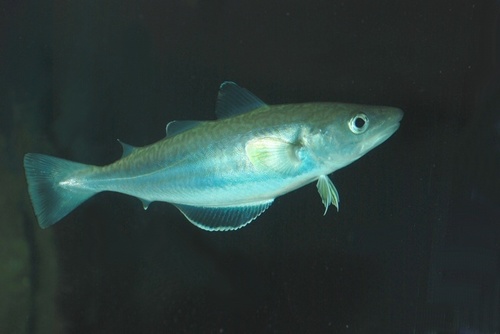
Whiting
The Bluefin Tuna, belonging to the Thunnus genus, includes several species like the Atlantic, Pacific, and Southern Bluefin. These magnificent fish are apex predators, known for their incredible size, speed, and long migrations across the world's oceans. They play a critical role in marine ecosystems.
5 20 years
Lifespan
30 - 70 cm
Length
Least Concern
Conservation Status
30 km/h
Swimming speed
Carnivorous
Diet
Local Migration
Migration
Appearance Overview
The Bluefin Tuna is renowned for its large, streamlined body, built for speed and endurance in the open ocean.
Color
Dark metallic blue on top with a silvery underside
Fins
Two dorsal fins, the first depressible; small finlets running from the second dorsal and anal fins to the tail
Body Shape
Torpedo-shaped, designed for efficient movement through water
Length
Up to 13 feet (4 meters)
Weight
Up to 2,000 lbs (907 kg)
Diet
Carnivorous, feeding on fish, squid, crustaceans, and occasionally on zooplankton and eels.
Feeding Behavior
Highly active predator, the Bluefin Tuna uses its speed and agility to chase down prey, often in coordinated schools.
Social Behavior
Forms large schools, especially when young; adults may become more solitary but still often migrate in groups.
Commercial Relevance
Extremely high value, especially in sushi and sashimi markets, where it is considered a delicacy.
Conservation measures
Measures include international fishing quotas, seasonal closures, and efforts to establish marine protected areas. Organizations like ICCAT play a key role in managing Bluefin Tuna stocks.
Status
Varies by species; Atlantic Bluefin is Endangered, Pacific Bluefin is Vulnerable, and Southern Bluefin is Critically Endangered.
Threats
Overfishing is the primary threat. Additional concerns include bycatch in fishing gear, climate change affecting ocean conditions, and habitat degradation impacting spawning areas.
Habitat Distribution
Depth Range
0-1,000 meters, though they are most commonly found in surface to mid-waters
Geographic Range
Atlantic Ocean (from Newfoundland to the Mediterranean Sea), Pacific Ocean (from Japan to California), and Southern Ocean (around Australia, New Zealand, and South Africa)
Preferred Environment
Temperate and subtropical waters, open ocean, often near continental shelves and slopes
Reproduction and Life Cycle
Breeding Habits
Spawns in warm waters, with major spawning grounds in the Gulf of Mexico, the Mediterranean Sea, and off the coasts of Japan and Taiwan.
Development Stages
Larvae hatch in plankton-rich waters and develop rapidly, transitioning through juvenile stages before reaching adulthood. Growth rates are high, especially in the early years.
Fecundity
Females can produce a vast number of eggs, with larger females capable of releasing up to 30 million eggs per season.
Maturity Age
Varies by species; Atlantic Bluefin typically matures at 4-8 years, while Pacific Bluefin can mature slightly earlier.
Faqs about Whiting
Where can Bluefin Tuna be found?
Bluefin Tuna are found in the Atlantic, Pacific, and Indian Oceans, as well as the Mediterranean Sea.
How long do Bluefin Tuna live?
Bluefin Tuna can live up to 40 years, though this varies by species and environmental conditions.
How fast can Bluefin Tuna swim?
Bluefin Tuna can swim at speeds up to 43 mph (70 km/h), making them among the fastest fish in the ocean.
Are Bluefin Tuna warm-blooded?
Bluefin Tuna are warm-blooded, allowing them to maintain a body temperature higher than the surrounding water, which helps them survive in colder environments.
Is the Bluefin Tuna population at risk?
Yes, overfishing has severely depleted Bluefin Tuna populations, making them a target of conservation efforts.
What is the diet of the Bluefin Tuna?
Bluefin Tuna primarily feed on smaller fish, squid, and crustaceans.
Do Bluefin Tuna migrate?
They are known for their long migrations, often crossing entire oceans to reach feeding and spawning grounds.
When do Bluefin Tuna reach maturity?
They reach sexual maturity at around 4-8 years, depending on the species and environmental factors.
How many eggs can a Bluefin Tuna lay?
Females can release millions of eggs per spawning season, contributing to their high reproductive potential.
Why is Bluefin Tuna so valuable?
Their high fat content and rich flavor make them highly sought after in sushi and sashimi cuisine.
Copyright @ Nature Style Limited. All Rights Reserved.
 English
English